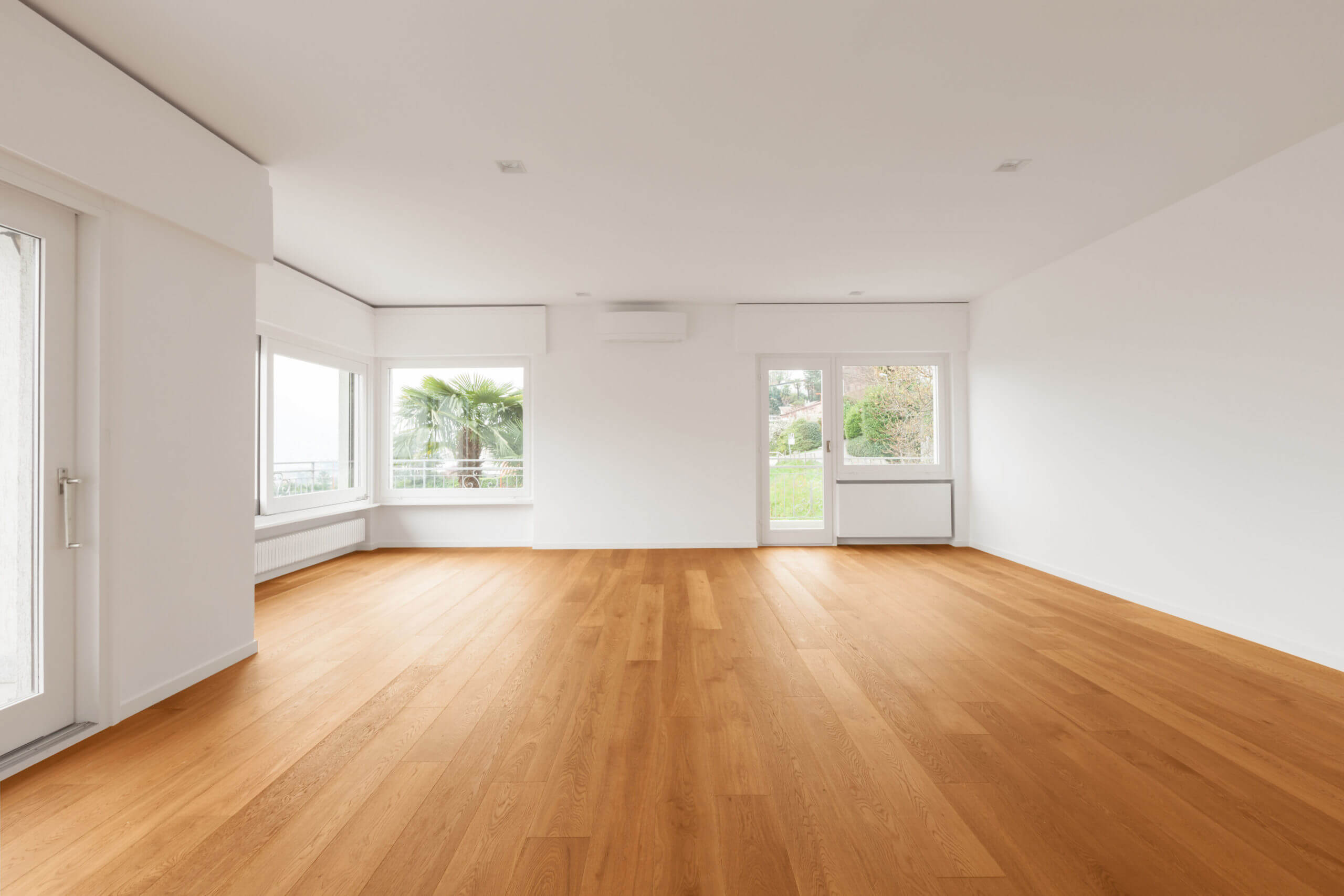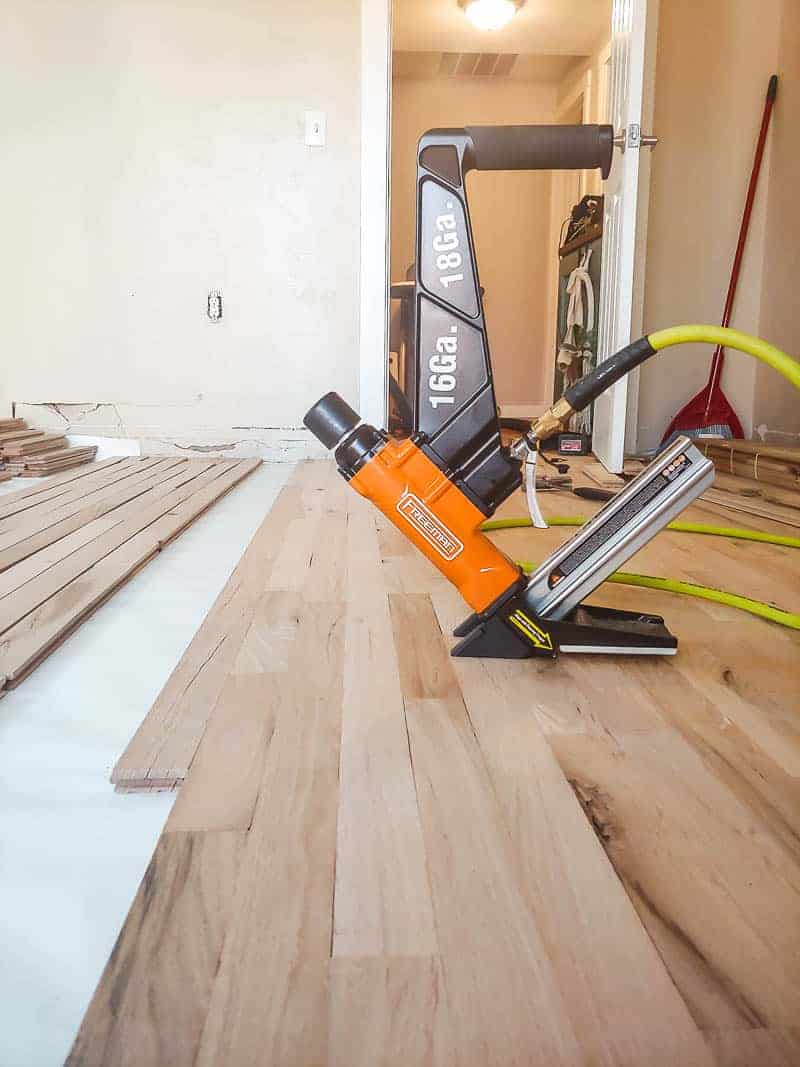The Advantages and Drawbacks of Putting Up Hardwood Floor Covering in Your Living Areas
When taking into consideration the installment of wood floor covering in your living rooms, it's crucial to weigh both its drawbacks and advantages. This kind of floor covering uses unmatched visual allure and can substantially improve property worth, many thanks to its classic sophistication and compatibility with different interior styles. Recognizing these variables is critical prior to making a notified decision on whether wood floor covering is the ideal option for your home.
Visual Charm
Hardwood flooring is commonly celebrated for its visual allure, commonly thought about an ageless choice that boosts the visual beauty of any indoor space. The all-natural appeal and warmth of wood can raise the overall setting, making it an eye-catching choice for property owners and developers alike. Its functional nature enables it to seamlessly mix with different architectural designs, from conventional and timeless to contemporary and modern.
The range of timber varieties, stains, and coatings readily available offers adequate customization chances. Alternatives such as oak, maple, cherry, and walnut each offer special grain patterns and shades, catering to diverse style choices. The capacity to select in between various plank widths and setup patterns, such as herringbone or angled formats, includes to the design versatility.
Another significant advantage is hardwood's ability to age gracefully. In time, it can develop a rich patina that includes personality and beauty to the room. This aging procedure commonly improves its appeal, making it a popular feature in both new constructions and renovation tasks. Basically, wood flooring not only adds to a prompt visual impact but additionally proceeds to provide aesthetic advantages as it develops.

Longevity and Durability
In enhancement to its impressive visual charm, the long-lasting nature of wood floor covering is another compelling factor for its prevalent popularity. Distinguished for its robustness, hardwood flooring can stand up to significant foot traffic and preserve its architectural honesty for years. Unlike other flooring choices that might weaken or show indicators of wear relatively rapidly, hardwood possesses an intrinsic toughness that makes it particularly resilient.
One of the crucial characteristics contributing to the longevity of hardwood flooring is its resistance to daily wear and tear. High-grade hardwood varieties, such as oak, maple, and cherry, deal outstanding toughness, making them appropriate for high-traffic locations within a home.
In addition, hardwood floor covering has a tendency to age gracefully, creating a rich aging that improves its personality in time. This aging procedure not only contributes to its appeal but additionally confirms to its long-term nature. As a result, investing in hardwood floor covering is typically considered as a long-lasting commitment that can add worth to a residential property while providing enduring appeal and functionality.
Upkeep Requirements
Preserving wood floor covering, while typically simple, calls for a consistent and thoughtful strategy to maintain its elegance and toughness. Normal maintenance includes sweeping or vacuuming to eliminate dirt and particles that can create scrapes. It's advisable to utilize a soft-bristled mop or a vacuum cleaner without a beater bar to decrease possible damage.
Spills should be dealt with immediately to avoid wetness from leaking into the wood and creating warping or staining. Using a damp, not wet, mop for cleaning is vital, as too much water look at here now can be destructive. Using a wood flooring cleaner especially designed for timber surface areas can boost the floor's natural radiance without leaving residue.
Periodic refinishing is another crucial aspect of maintenance. Over time, the finish can put on down, leaving the timber at risk to damages. Refinishing includes sanding down the leading layer and using a new layer of coating, which can bring back the floor's appearance and expand its life-span.
Safety procedures, such as utilizing furniture pads and positioning carpets in high-traffic areas, can reduce wear and tear. In addition, keeping steady indoor moisture levels helps prevent timber from broadening or contracting exceedingly. Sticking to these maintenance practices makes certain that hardwood flooring continues to be a durable and classic option for living rooms.
Expense Considerations
When evaluating the price considerations of mounting visit here hardwood floor covering, it is important to represent both first expenses and long-lasting monetary implications. The preliminary outlay for wood flooring can be significant, flooring charleston sc especially when picking top notch wood or unique species. Prices usually consist of the cost of the product itself, installation costs, and potential subfloor prep work. These expenditures can vary dramatically based on the kind of hardwood chosen and the intricacy of the installation process.
Nonetheless, wood floor covering offers beneficial long-term financial benefits that might counter the preliminary financial investment. Appropriately preserved hardwood can last for decades, lowering the demand for regular replacements compared to various other floor covering choices.
Furthermore, hardwood floor covering is fairly simple to repair (refinishing hardwood floors). Individual slabs can be sanded and redecorated several times, which can prolong the life of the flooring and lower long-lasting maintenance prices. Therefore, while the upfront prices can be high, the enduring worth and durability typically make hardwood a monetarily sound financial investment gradually
Moisture Susceptability
While hardwood flooring supplies notable monetary benefits, it is very important to consider its vulnerability to moisture-related problems. Wood, being a natural product, is susceptible to increasing and acquiring based upon the humidity degrees in the environment. Too much moisture can trigger the wood to swell, warp, or also create mold, consequently compromising both its aesthetic appeal and architectural integrity.
In spaces like kitchens, shower rooms, or basements where wetness degrees are typically higher, wood floor covering might not be the most useful selection. Also minor spills, if not quickly cleansed, can seep right into the joints and create lasting damages. Seasonal changes can likewise impact wood, causing voids throughout dry periods and buckling when humidity rises.
To reduce these dangers, home owners can take into consideration crafted wood, which offers better resistance to moisture due to its multi-layer construction. Additionally, preserving a constant indoor climate with the aid of dehumidifiers or humidifiers can help preserve the problem of wood floorings. Securing the surface with protective finishes also provides an extra layer of protection versus wetness infiltration.
Comprehending the potential for moisture-related problems is crucial in making an informed decision concerning hardwood flooring. Correct care and preventive measures can significantly enhance its long life and efficiency in living spaces.

Conclusion
In conclusion, installing hardwood flooring in living spaces presents a blend of difficulties and advantages. In spite of these disadvantages, the investment in hardwood flooring frequently pays dividends in both functionality and home value, making it a prominent option for discerning homeowners.
When considering the installation of wood floor covering in your living rooms, it's crucial to consider both its disadvantages and benefits.Hardwood flooring is extensively commemorated for its aesthetic appeal, typically thought about a timeless selection that boosts the aesthetic beauty of any interior room. Adhering to these maintenance techniques makes certain that wood flooring continues to be a long lasting and timeless choice for living spaces.
In verdict, setting up hardwood floor covering in living areas presents a mix of advantages and challenges. In spite of these downsides, the financial investment in hardwood floor covering typically pays dividends in both capability and residential property value, making it a preferred option for critical house owners.